Abstract
The survival of selected hygienically relevant bacterial species in activated carbon (AC) filters on a bench scale was investigated. The results revealed that after inoculation of the test strains the previously sterilized AC absorbed all bacteria (10(6) to 10(7)). After a period of 6 to 13 days without countable bacteria in the effluent, the numbers of Escherichia coli, Pseudomonas aeruginosa, and Pseudomonas putida increased up to 10(4) to 10(5) CFU/ml of effluent and 10(6) to 10(7) CFU/g of AC. When Klebsiella pneumoniae and Streptococcus faecalis were used, no growth in filters could be observed. The numbers of E. coli, P. aeruginosa, and P. putida, however, decreased immediately and showed no regrowth in nonsterile AC from a filter which had been continuously connected to running tap water for 2 months. Under these conditions an autochthonous microflora developed on the carbon surface which could be demonstrated by scanning electron microscopy and culturing methods (heterotrophic plate count). These bacteria reduced E. coli, P. aeruginosa, and P. putida densities in the effluent by a factor of more than 10(5) within 1 to 5 days. The hypothesis that antagonistic substances of the autochthonous microflora were responsible for the elimination of the artificial contamination could not be confirmed because less than 1% of the isolates of the autochthonous microflora were able to produce such substances as indicated by in vitro tests. Competition for limiting nutrients was thought to be the reason for the observed effects.
Full text
PDF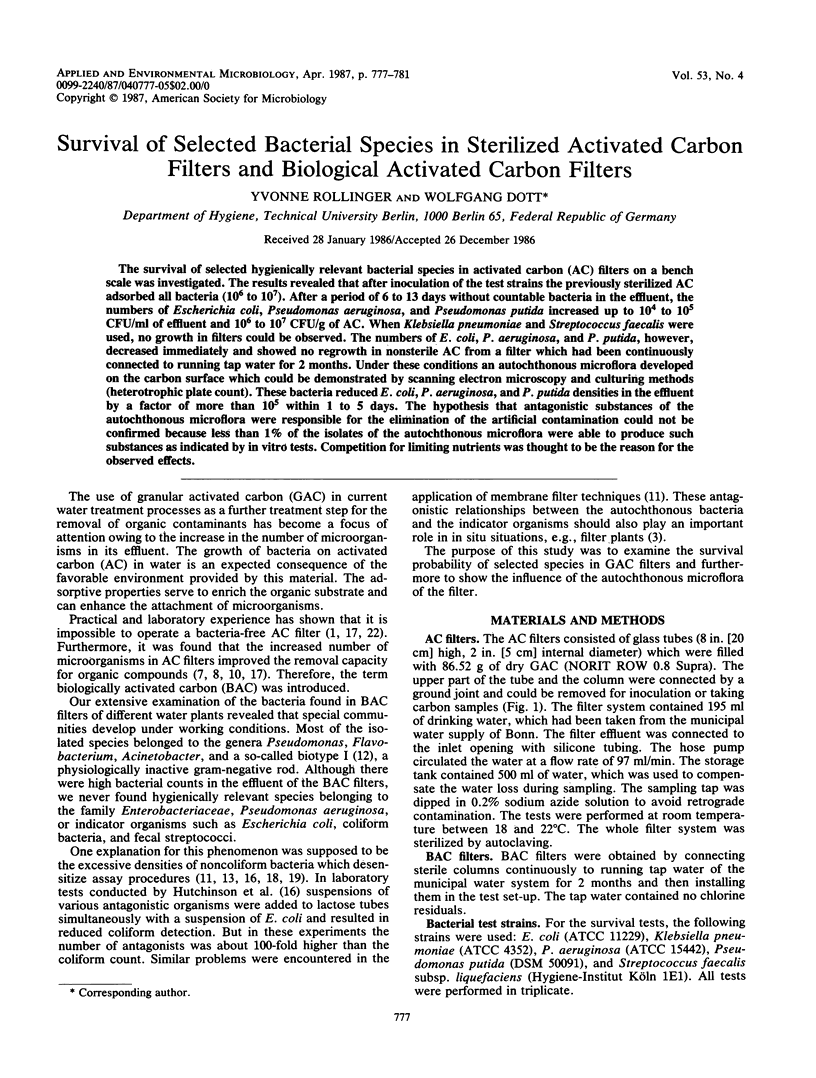
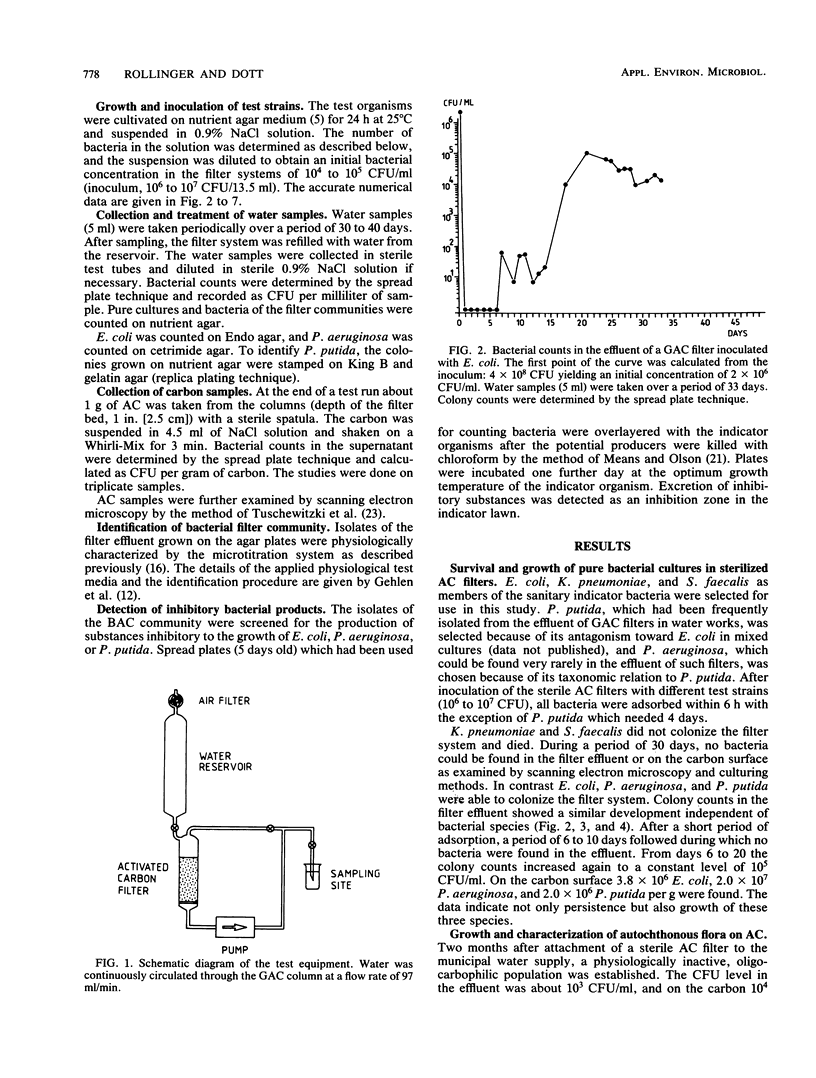
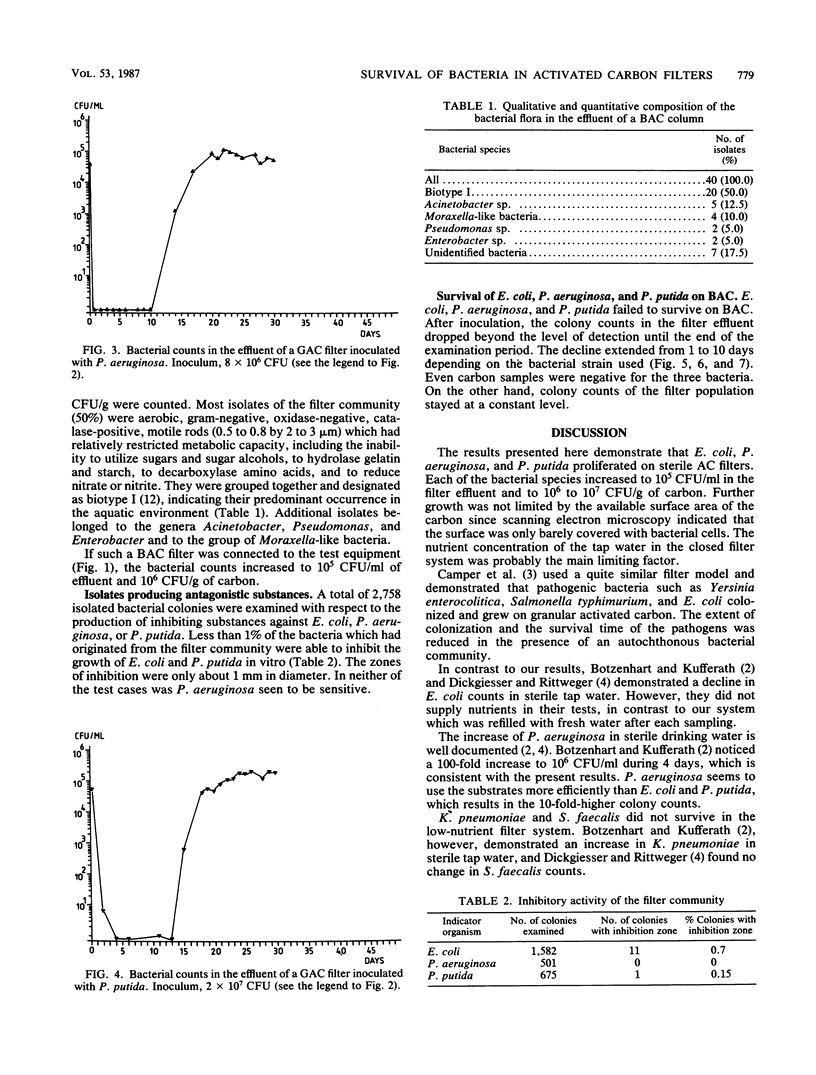
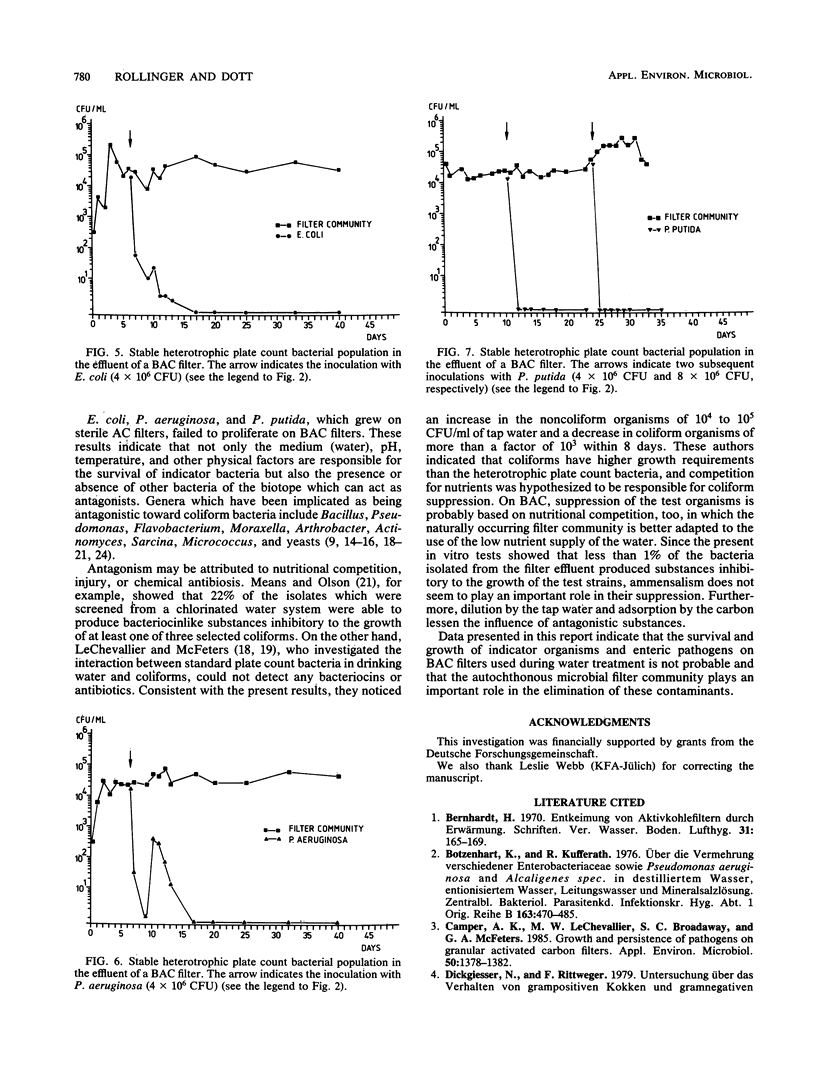
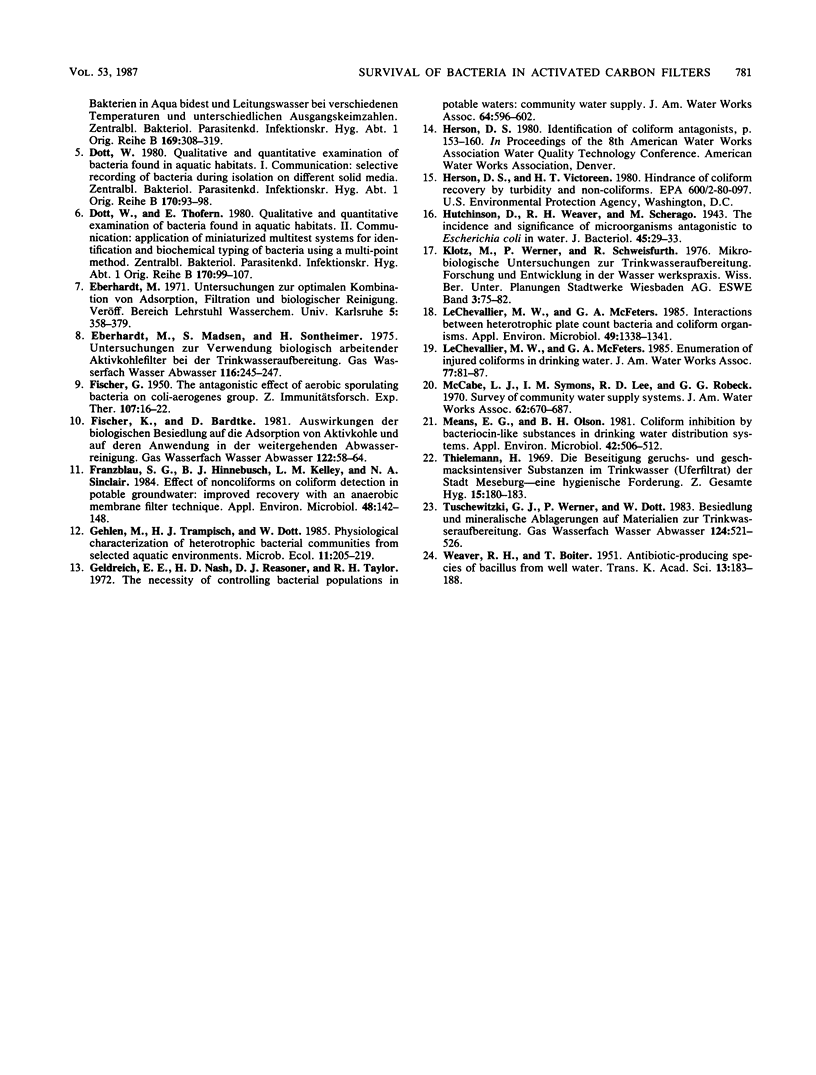
Selected References
These references are in PubMed. This may not be the complete list of references from this article.
- Botzenhart K., Kufferath R. Uber die Vermehrung verschiedener Enterobacteriaceae sowie Pseudomonas aeruginosa und Alkaligenes spec. in destilliertem Wasser, entioniertem Wasser, Leitungswasser und Mineralsalzlösung. Zentralbl Bakteriol Orig B. 1976 Dec;163(5-6):470–485. [PubMed] [Google Scholar]
- Camper A. K., LeChevallier M. W., Broadaway S. C., McFeters G. A. Growth and persistence of pathogens on granular activated carbon filters. Appl Environ Microbiol. 1985 Dec;50(6):1378–1382. doi: 10.1128/aem.50.6.1378-1382.1985. [DOI] [PMC free article] [PubMed] [Google Scholar]
- Dott W. Qualitative und quantitative Bestimmung von Bakterienpopulationen aus aquatischen Biotopen. 1. Mitteilung: Selektionierung von Bakteriengruppen durch Isolierung auf verschiedenen Nährböden. Zentralbl Bakteriol B. 1980 Feb;170(1-2):93–98. [PubMed] [Google Scholar]
- Dott W., Thofern E. Qualitative und quantitative Bestimmung von Bakterienpopulationen aus aquatischen Biotopen. 2. Mitteilung: Anwendung miniaturisierter Systeme zur Identifizierung und Biotypisierung von Bakterien unter Verwendung der Vielpunktbeimpfungsmethode. Zentralbl Bakteriol B. 1980 Feb;170(1-2):99–107. [PubMed] [Google Scholar]
- Franzblau S. G., Hinnebusch B. J., Kelley L. M., Sinclair N. A. Effect of noncoliforms on coliform detection in potable groundwater: improved recovery with an anaerobic membrane filter technique. Appl Environ Microbiol. 1984 Jul;48(1):142–148. doi: 10.1128/aem.48.1.142-148.1984. [DOI] [PMC free article] [PubMed] [Google Scholar]
- LeChevallier M. W., McFeters G. A. Interactions between heterotrophic plate count bacteria and coliform organisms. Appl Environ Microbiol. 1985 May;49(5):1338–1341. doi: 10.1128/aem.49.5.1338-1341.1985. [DOI] [PMC free article] [PubMed] [Google Scholar]
- Means E. G., Olson B. H. Coliform inhibition by bacteriocin-like substances in drinking water distribution systems. Appl Environ Microbiol. 1981 Sep;42(3):506–512. doi: 10.1128/aem.42.3.506-512.1981. [DOI] [PMC free article] [PubMed] [Google Scholar]
- Thielemann H. Die Beseitigung geruchs- und geschmacksintensver Substanzen im Trinkwasser (Uferfiltrat) der Stadt Merseburg--eine hygienische Forderung. Z Gesamte Hyg. 1969 Mar;15(3):180–183. [PubMed] [Google Scholar]


